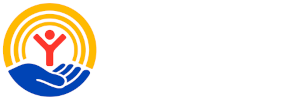Meet ALICE®
ALICE® is an acronym that stands for Asset Limited, Income Constrained, Employed.
ALICE® households earn incomes above the Federal Poverty Level (FPL), but below the basic cost of living. These households are one unexpected expense away from slipping into poverty as defined by the FPL.
Overlooked and underserved by outdated poverty measures such as the FPL, ALICE® families and individuals have jobs, but most do not qualify for social services or support. The jobs held by ALICE® individuals are critical to the success of our communities – jobs such as childcare workers, laborers, home health aides, heavy truck drivers, store clerks, repair workers, and office assistants – yet they aren’t sure if they’ll be able to put dinner on the table each night.
The Wisconsin ALICE® Report provides timely, research-based data that quantifies who in Wisconsin, is living on the edge of financial insecurity. ALICE® individuals are striving for financial stability, but face complex barriers.

"Although I am older than most of the population [at UWGB] and poor, no one sees that (thankfully). My eliminating my face by using my hair is me expressing the fact that you can't see my individualness. You can't see my poverty. You can't see my age. I'm just a girl."
ALICE® Knows No Demographic
Anyone can be ALICE®.
Our entire community is affected by the challenges that ALICE® families and individuals face. By tackling those challenges, we can build a stronger and more prosperous community.
ALICE® in Brown County
In Brown County, more than 1 in 3 households are living at or below the ALICE® Threshold and are struggling to meet their basic needs.
ALICE® Knows No Borders
Brown County communities with percentages of households living below the ALICE® Threshold (ALICE® + poverty) at or above the county average of 34%:
- Green Bay 42%
- Denmark 42%
- Ashwaubenon 38%
- Pulaski 35%
- Bellevue 34%
Who is ALICE® in Brown County?
The lived experiences and challenges of ALICE® community members impact our entire community. When we lift up ALICE®, we all benefit. ALICE® is our friend, our neighbor, our family member, our coworker. Examples include:
- College students and recent graduates working and saddled with tuition debt
- Young families struggling to pay for childcare
- Underemployed – less than full-time work and no benefits
- Military – travel and demanding jobs
- People with disabilities – less income, more costs
- Family caregivers for people with disabilities and seniors
- Seniors – loss of income, rising costs, health issues
Overall, more than 1 in 3 Brown County households (34%) lives at or below the ALICE® Threshold and struggles to meet daily basic needs.
BCUW uplifts the voices of ALICE® and their lived expertise. We listen, learn, research promising approaches, and apply this information to develop strategies that help improve community conditions for ALICE® and everyone in Brown County.
Our work is therefore guided by three questions:
- How does our work reflect households living at or below the ALICE® Threshold?
- How are we closing the gap for them?
- How are we closing the gap where there are disparities?
These questions provide direction while allowing for innovation and flexibility in our fund investments, initiatives, and nonpartisan advocacy efforts.
